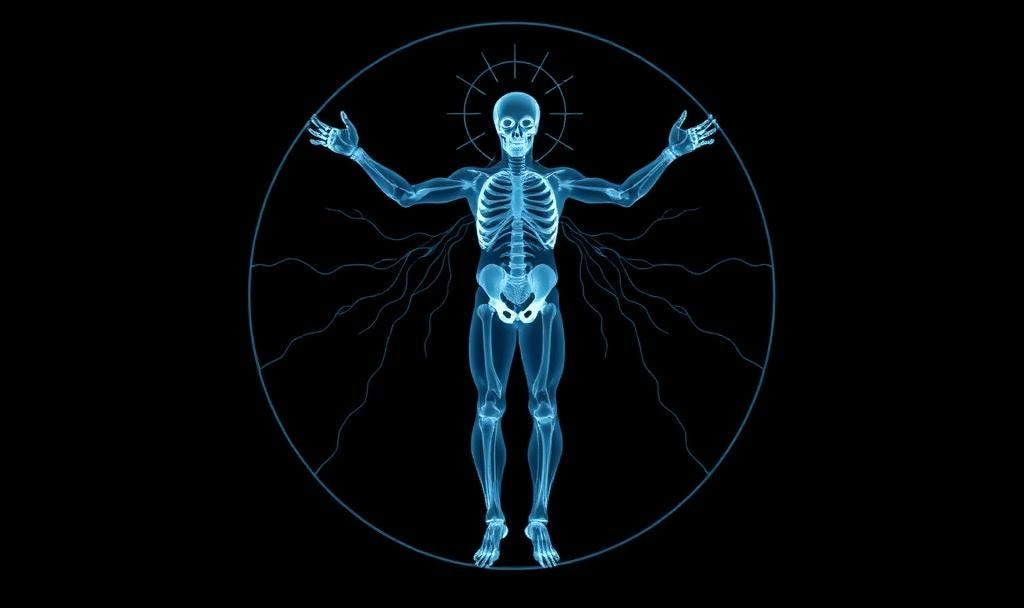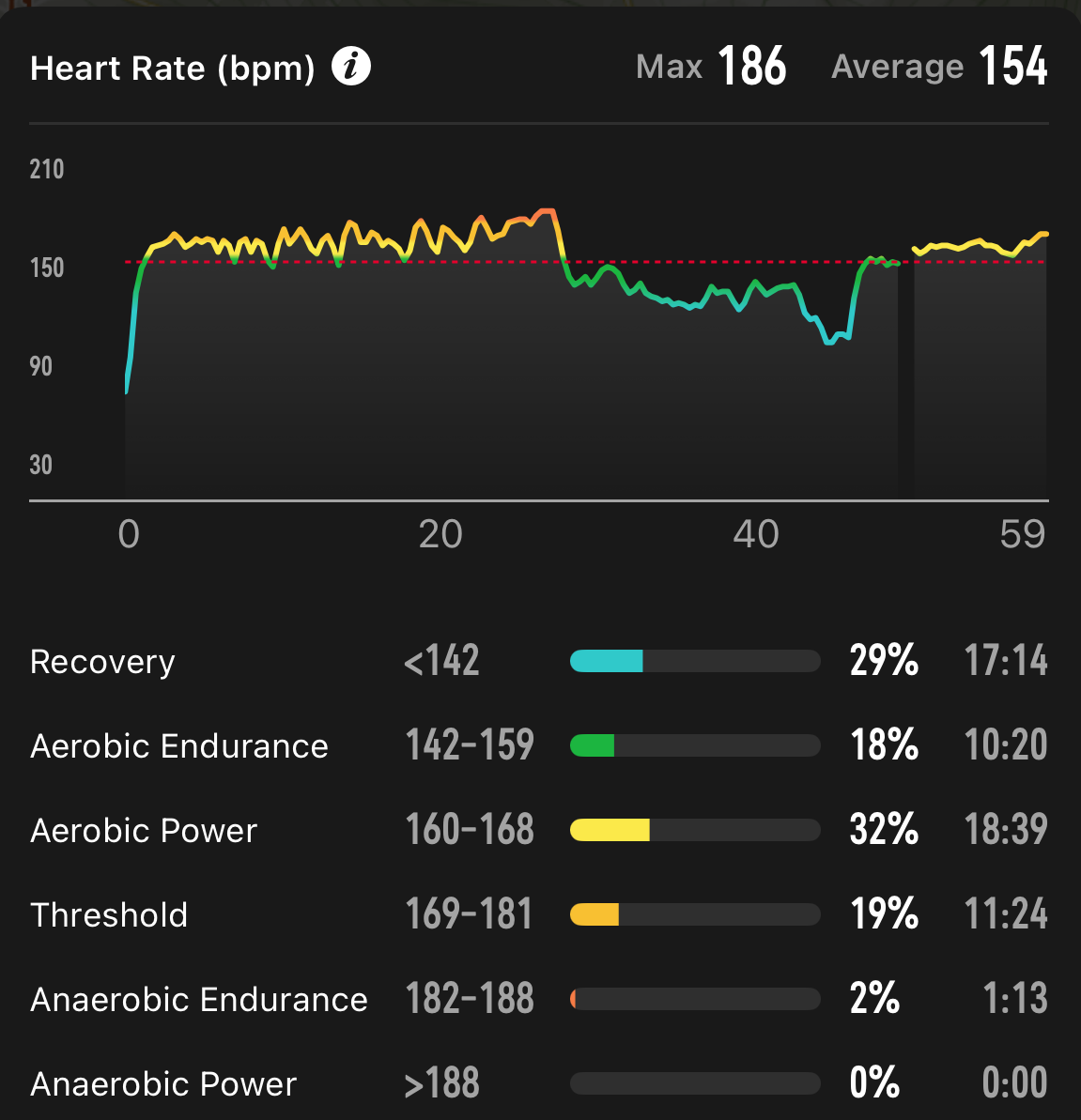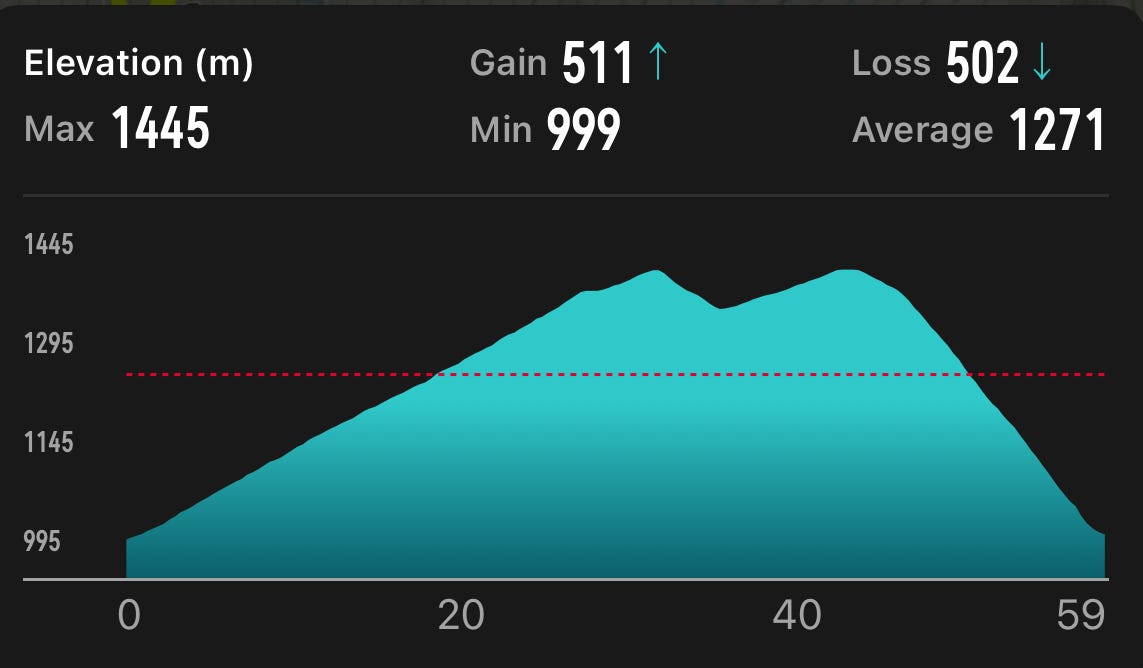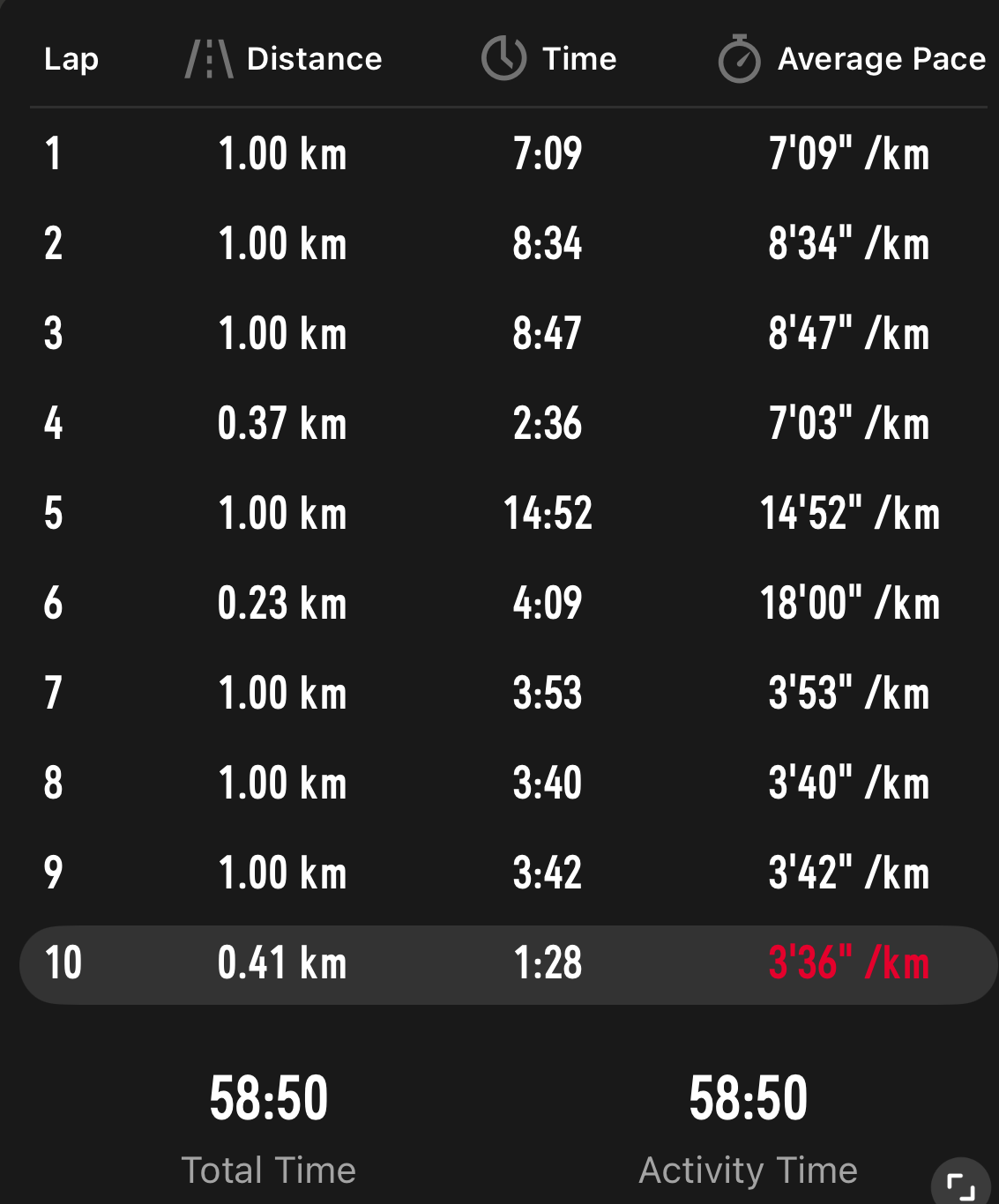Not All Exercise is Created Equal
Understanding load application for desired health and performance goals
It happened again… One of the preeminent voices in the health and wellness space had an all time rubbish take (and as such I feel obliged to do my part in service of ‘reality’ or ‘truth’ given Brandolini’s Law). This isn’t uncommon - as someone who averages around 1.5 podcasts a week I can assure you, if you speak for long enough you’ll make a mistake and/or have a bad take. This is also not about the individual (I don’t believe in tearing others down), but it’s definitely a learning moment. I saw the take after I’d been on a podcast and shared a version of the thesis of this article with the host who suggested I write about it, so between the two it became clear this piece needed writing.
What was the take? That people could swap 10 000 steps for 10mins of vigorous activity. Regular readers would remember this piece I wrote about whether you could outrun a sedentary lifestyle - which is in essence what 10mins of vigorous activity (swapped for 10 000 steps) would be. But I already explained all that in the piece linked in this paragraph. This piece, however, is dissecting things further and explaining why swapping exercise types etc is probably reductionist and how we can be better.
A Reductionist Viewpoint
I will concede that the simple falsehood is often times better that the complex truth when it comes to activating people to change. This takes a utilitarian viewpoint (the ends justifies the means) and blurs the line between science and advocacy. For this newsletters audience, and for my personal goals, I tend to take the ‘give a man a rod’ approach rather than giving him a metaphorical fish. That is to say, if you can’t explain things simply, I don’t think you know them well enough and my goal is to help others understand health and performance better.
To suggest we can swap any activity, is only partially correct. It may be akin to saying we can swap any foods for others if we match calories. This is correct on a caloric level, but ignores any nutrient information, either macro (protein, fat carbohydrates) or micro (vitamins and minerals). Often times, this isn’t an issue, until it is an issue - for example scurvy (see below quote about its history).
“Scurvy has a deep historical significance and has plagued human populations for centuries. Ancient Egyptian, Greek, and Roman literature all provided detailed descriptions of the clinical signs and symptoms of scurvy. Scurvy decimated the European and British explorers of the Renaissance. During the Great Potato Famine, the American Civil War, the expedition of the North Pole, and the California Gold Rush, scurvy was a significant source of sickness and mortality throughout most of Europe. One of the first to show that sailors who spent months at sea might prevent scurvy by eating a diet high in vegetables was Captain James Cook. In a book titled Treatise of the Scurvy, James Lind, a Scottish naval surgeon, detailed his observations and research on scurvy aboard ships and described the effective treatment of scurvy with citrus fruits. As awareness of the importance of fresh fruits and vegetables in the diet increased, there was a decline in the prevalence of scurvy in the 18th century, especially after the establishment of the link between scurvy and vitamin C. Between 1928 and 1931, Szent-Gyorgyi extracted hexuronic acid from various sources such as cabbage, oranges, paprika, and adrenal glands. This substance was later identified as vitamin C and was discovered to have preventive properties against scurvy.” From Gandhi et al 2023
What Adaptation Are We Talking About?
Generally when we think of exercise, we think of ‘fitness’. This catchall term is quite poorly understood most people and research definitions of it include a broad variety of biomotor abilities. These range from cardiovascular capacity (what most people think about when they think of the word ‘fitness’) through to things like strength, flexibility and even balance.
Another lens we can use to understand any activity, is not so much what capacities we are developing, but which organ systems we are impacting (this will always be more dimmer switch than light switch, that is; ‘more or less’, not ‘on & off’). It is here where we find our micronutrients of the ‘fitness’ world, specifically, when we start to use this lens we start to understand how to tweak our exercise to bias certain stressors more or less. This is something coaches often understand and use to good effect but seems not to have made its way into realms outside of clinical or athletic performance populations.
Thinking in Systems
Here is some example data from a run I did a while back. When looking at this from a heart rate lens, it looks like a pretty tough 25min block, with a fair recovery (~15min) and then another 10ish minutes quite hard again.
All in all a pretty good workout, a good amount of time with my heart rate around my second threshold (more explanation of this here) and even some time with it up nearer maximum. Good for ‘fitness’ (and by that I mean aerobic adaptations to exercise and even some anaerobic capacity adaptations). Simple… But what if I showed you this data from the run:
Now we can see I went up and downhill. Interesting… This changes things. Well, not for the cardiovascular or ventilatory systems (heart, blood vessels and lungs), but for the musculoskeletal system.
The uphills, especially at intensity, really deloads the skeletal system (bones and joints) in comparison to flat running. When it comes to tendons it’s a bit of a mixed bag, specifically because they work so differently and how they work is technical so let’s just leave it as ‘different’ - we don’t need to get into the physics of length-tension relationships and timing of stretch-shortening cycles.
Ok so going up deloads some things, and via logic we could also say it loads up others (like the cardiovascular system) for a given pace. Got it. There’s another crease though:
We have my splits here and can see there’s some much quicker running on the way down. Now this isn’t a great example, because those are certainly paces I could manage on the flat, but we have more context coming don’t worry.
This was a trail, not a road. This meant a few things, specifically, there was a much greater skill component to this, specifically picking lines and where to put my feet. Which for a trailrunning athlete is a key area of need and skill development (not all training is about health and metabolism - the latter a common misunderstanding in the endurance world).
Beyond this, if this wasn’t a trail, I’d have been able to run this quite a bit quicker. In which case this provides a significant (perhaps huge) stimulus of eccentric muscle contractions, which improve tolerance for this high force (and at a high velocity) contraction in the muscles and potentially provide some ‘overspeed’ type of stimulus for the nervous system (I say potentially because it’s unlikely I’d have been fast enough to really do this, in that case we generally mean faster than sprint speed).
But, as many may have intuited, this downhill stimulus was significant for bones and tendons too.
The other crease in all of this context? I was using hiking/trailrunning poles on the way up. The effect of this, in very brief, means there’s reduced force needed from the lower limbs (duh we are helping with the upper limbs) but a concomitant increase in VO2 aka the amount of oxygen used, largely due to the increased muscle mass involved. It also means there’s an upper body stimulus for the musculoskeletal system (which is not usually the case for running).
What About Strength Training?
We can certainly tweak strength training to bias different factors (many of which I think are overlooked at least in the fact that they’re trading factors off - remember there are no solutions, just tradeoffs).
The Continuum
It is helpful to remember that strength training is on a continuum with endurance training. That is, if the lunges are heavy (so I can only do a handful) that would be more of a strength stimulus, but if I ask you to do bodyweight lunges for a mile, that’s more akin to endurance training. Understanding this, and the fact there are subsequently different limiters, which are generally where we get our biggest stimulus should help readers understand where this is going.
Crossfit & Hyrox
These ‘hybrid’ type of sports and workouts (though because crossfit can be anything this isn’t ALWAYS the case - but the picture you think of when you think of crossfit is what I mean) reduce the emphasis on strength and shift it to a degree towards endurance. This should be immediately obvious - you’re breathing heavier and your heart rate is higher.
So the strength developed is less or there is less emphasis on it, but that doesn’t mean it doesn’t count as resistance training, or that it is not valuable. It’s just different, remember context matters - the hope is that this writing empowers readers to better understand and make decisions.
Unilaterality
For those not familiar, we can do resistance exercises with two limbs (bilateral) or one limb (unilateral) and whilst these are extremely similar, they aren’t the same per se.
Interestingly, and readers may have experienced this, generally folks have greater force output via a single limb than its bilateral equivalent. This is a phenomenon know as ‘bilateral deficit’. Said differently, the output of the two limbs is less than sum of their outputs when tested individually. My understanding of why is largely to do with neural output required but if this is no longer the current understanding please do let me know!
Stability
Unilateral exercises should not be confused with unstable exercises, however, despite the fact that the two often go hand in hand. For instance, one could do a squat or a single leg squat (which has a stability challenge) or one could use a Bulgarian split squat which has a much smaller stability component. This is crucial because, the required coordination for stabilising means that output is reduced.
Again, this is not a bad thing - stability training and having good balance is crucial as we age and even in some sporting contexts. However, this is a tradeoff that changes the stimulus significantly and shouldn’t be misunderstood.
How Do We Equate Exercise?
To be honest, this is a problem that plagues elite level sport; quantifying load across different activities. There are any number of solutions - but as I learned in medicine, when there is more than one treatment, generally it means none are perfect, and this holds true here.
A simple way is to use RPE (rating of perceived exertion eg how hard was it out of 10) and multiple by duration. So a walk of RPE 0.5 for 2 hours is 0.5 x 120 or 60 arbitrary units compared to 10mins of RPE 10 or 100 arbitrary units (for the record you are probably not walking 10k in 2hrs, especially if your RPE is 0.5). This will give a rough idea of stimulus but is absolutely non-specific and perhaps tracks closest to ‘energy’ but is hard to understand at any level of depth.
Another way is to look at heart rate and multiple by duration. This only really speaks to cardiovascular and metabolic (to a degree) stimuli.
As such we are left with a bit of a bad taste in our mouth, trying to really equate things like strength training vs speed training vs endurance training. And perhaps, this is a feature not a bug - they’re different stimulating to different tissues and organ systems. As unsatisfying as it is, they may not be perfectly equivalent and that’s ok (remember this is about scientific accuracy not advocacy).
So can we swap 10000 steps for 10mins of vigorous activity? Well it depends.
One is probably a good surrogate for a general movement and not being too inactive, and one is a big stimulus of exercise. That question is more akin to; “can you out-exercise a sedentary lifestyle?”, which as mentioned (and linked) in the introduction, I have previously written about.
If we take another approach and assume the 10000 is a single walk of ~10km (~6mi) then we get to the question of how much vigorous activity is equivalent to very easy activity. And my response would be; “for which tissue or organ system?”.
Ultimately I think this is a false dichotomy (you should probably do both for optimal health) or a fool’s errand (do the one you think you can get done for the real world solution).
Remember, when thinking about physical activity and exercise for health, the hierarchy is generally; consistency (make sure you do it), amount (get enough), type (resistance training vs ‘cardio’), then specifics of timing, intensity and dosing of each etc.
If some of this is familiar I wrote, in passing, about the thesis of this topic previously in this piece about the 10% rule in running.
References
Gandhi M, Elfeky O, Ertugrul H, Chela HK, Daglilar E. Scurvy: Rediscovering a Forgotten Disease. Diseases. 2023 May 26;11(2):78. doi: 10.3390/diseases11020078. PMID: 37366866; PMCID: PMC10296835.
Giovanelli N, Mari L, Pellegrini B, Bortolan L, d'Alleva M, Schena F, Lazzer S. The impact of pole use on vertical cost of transport and foot force during uphill treadmill walking before and after a simulated trail running competition. Eur J Appl Physiol. 2025 Jul 7. doi: 10.1007/s00421-025-05881-4. Epub ahead of print. PMID: 40622586.
Giovanelli N, Pellegrini B, Bortolan L, Mari L, Schena F, Lazzer S. Do poles really "save the legs" during uphill pole walking at different intensities? Eur J Appl Physiol. 2023 Dec;123(12):2803-2812. doi: 10.1007/s00421-023-05254-9. Epub 2023 Jul 1. PMID: 37392255.
Saller M, Nagengast N, Frisch M, Fuss FK. A Review of Biomechanical and Physiological Effects of Using Poles in Sports. Bioengineering (Basel). 2023 Apr 21;10(4):497. doi: 10.3390/bioengineering10040497. PMID: 37106684; PMCID: PMC10135831.
Škarabot J, Cronin N, Strojnik V, Avela J. Bilateral deficit in maximal force production. Eur J Appl Physiol. 2016 Dec;116(11-12):2057-2084. doi: 10.1007/s00421-016-3458-z. Epub 2016 Aug 31. PMID: 27582260.
Matomäki, P., Nuuttila, O., Heinonen, O. J., Kyröläinen, H., & Nummela, A. (2024). How to Equalize High- and Low-Intensity Endurance Exercise Dose. International Journal of Sports Physiology and Performance, 19(9), 851-859. Retrieved Sep 22, 2025, from https://doi.org/10.1123/ijspp.2024-0015





